Abstract 2/2018
Table of content
Arkadiusz Drabicki – Investigation of impact of sudden service disruptions (suspensions) on public transport trips in the city of Krakow – conclusions for further extension of the dynamic passenger information system
Agata Myszka, Mateusz Truszczyński – Potential of using inland waterways to increase transport availability of the Tri-city seaports
Janusz Korzeniowski – History of urban public transport in Olsztyn
Aleksandra Ciastoń-Ciulkin – Feeder bus lines to the Wieliczka Rynek Kopalnia railway station in the Krakow agglomeration
Abstracts
Arkadiusz Drabicki
Investigation of impact of sudden service disruptions (suspensions) on public transport trips in the city of Krakow – conclusions for further extension of the dynamic passenger information system
Abstract: Sudden and temporary service suspensions are a source of major deterioration of public transport quality and travel experience – yet it is possible to mitigate this by means of, among others, provision of adequate dynamic (real-time) travel information. The analysis presented in this article, devoted to this notion, is comprised of 2 essential stages. The first part of this article presents a general overview of registered temporary service suspension incidents, based on the records obtained from the tramway system operator in Krakow (ZIKiT), and outlines typical characteristics of such incidents (e.g. suspension duration, locations and causes). The second part of this article summarises main findings from own survey investigation conducted among public transport users in Krakow, as well as focus-group discussions which provide an additional insight into passengers’ choice patterns in the event of public transport service disruptions, as well as travel advice specifically desired by them. Results from survey investigation indicate, once service suspensions take place, passengers are most likely to seek an actual information on estimated time left till normal service conditions are resumed – remarkably, the stated max. waiting time thresholds (declared by passengers) are often likely to fall within the actual duration of public transport service suspensions. Furthermore, there is a high preference towards an availability of more personalised and prescriptive travel information content in such events, e.g. suggested (advised) travel alternatives; as well as access to information in real-time for all the city public transport services (i.e. system extension towards bus services). The objective of this article is to formulate conclusions and recommendations, useful for future development of dynamic passenger information system in the city of Krakow.
Key words: public transport, Krakow, passenger information, real-time passenger information,, suspensions in public transport
Agata Myszka, Mateusz Truszczyński
Potential of using inland waterways to increase transport availability of the Tri-city seaports
Abstract: Sea ports are the key links in the supply chain. They are a kind of window to the world for the country, combining the national economy with international markets. The competitiveness of individual ports and thus of individual national economies is influenced by many factors such as transport accessibility of the port on the back side, transport accessibility of the port from the forefront, port-logistic service. Polish ports continue to work in order to ensure the highest quality services for port customers in all three areas. Looking back to the past and reaching the 17th and 18th centuries, one can see how big potential in handling the cargo Wisła had. At that time, it was Europe’s most navigable river, making Gdansk and the Vistula basin one of the richest regions of the continent. At present, Vistula and the entire Polish system of inland waterways provide a huge untapped potential. The article focuses on the assessment of the impact on the Tri-city ports by the implementation of the “Assumptions for inland waterways development plans in Poland for 2016-2020 with a view to 2030.” The availability of transport, both theoretical and practical, has been explained. There are also presented analyzes of the current transport accessibility of port facilities and the vision of increasing the transport accessibility of the Tri-city seaports when the construction and modernization of inland waterways is implemented and in the case of abandoning those works.
Key words: inland navigation, seaports, intermodal transport, containers, infrastructure, transport accessibility
Janusz Korzeniowski
History of urban public transport in Olsztyn
Abstract: The article presents in brief the history of Olsztyn and the history of its transportation, with a special regard to rail transport. The tram transport in Olsztyn was launched in 1907, liquidated in 1965 and re-launched in 2015. Tram transport not only has raised the city’s prestige, but also largely solved the problems of urban public transport.
Key words: passenger transport, tram (public) transport, history of urban public transport
Aleksandra Ciastoń-Ciulkin
Feeder bus lines to the Wieliczka Rynek Kopalnia railway station in the Krakow agglomeration
Abstract. The increasing mobility of the population and a high degree of use of individual transport in travels often result with the escalation of problems related to – among others – with air pollution. Negative effects of transport activities force local governments to seek solutions for sustainable transport development. One of the right directions chosen by the Małopolska local government, there is the development of railway connections. A so-called the Agglomeration Railway System (SKA) covering in particular the northern part of the voivodeship and its capital. To increase the availability of the system, a number of solutions have been introduced that favor integrated traveling. The article presents one of solutions: bus lines servicing the Wieliczka Rynek-Kopalnia railway station of the SKA 1 railway line. The article describes individual components of the transport offer to encourage the use of combined bus + train and the degree of using these lines in the service of the railway line as well as the city of Wieliczka.
Key words: public transport, feeder bus lines, transport systems integration, agglomeration train

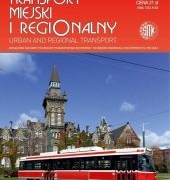 SITK RP
SITK RP 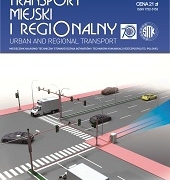 SITK RP
SITK RP 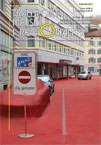 SITK RP
SITK RP 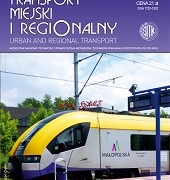
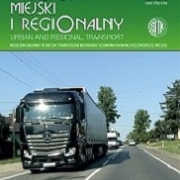
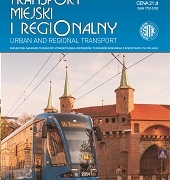 SITK RP
SITK RP 

